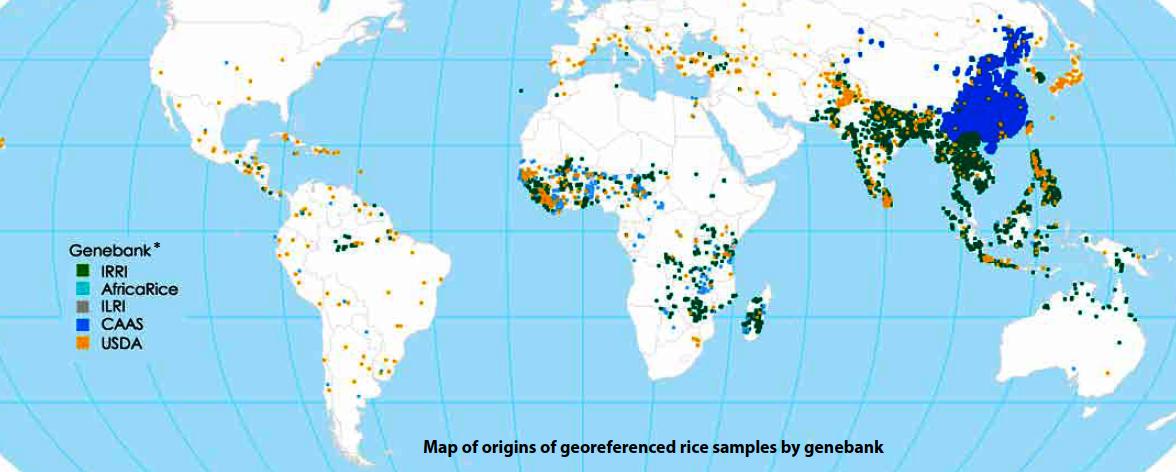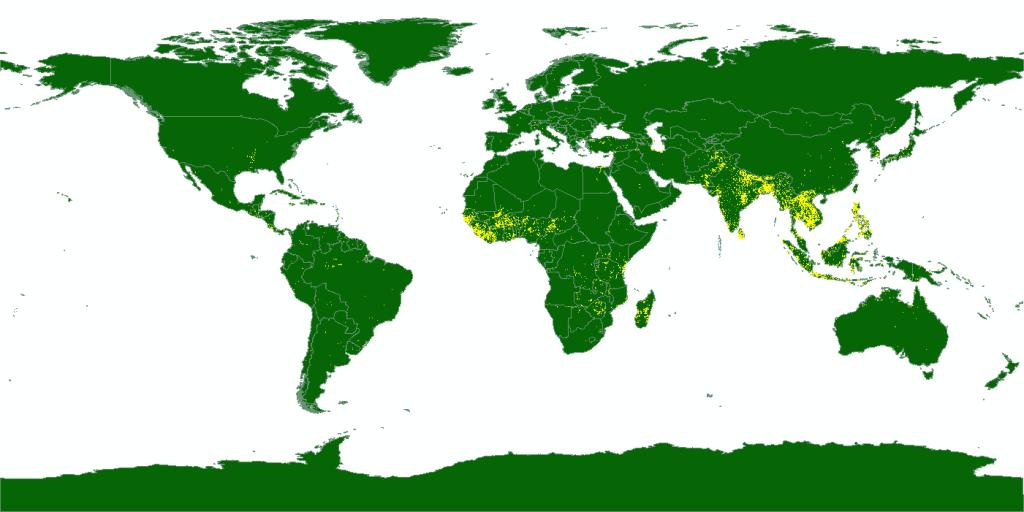- Iron-rich potatoes: from genebanks to “improving health in poor communities”.
- Agricultural intensification in Nepal; positive impacts vs “potential negative implications”. Via.
- Stray livestock wreak havoc in Sri Lanka. h/t CIAT.
- New book on “ecologically based rodent management”. Rodents say: “Rats!”
- Kew Director looks forward to 2011.
- More on North America’s wonderful wheat breeders and their ability to weather climate change.
- Plantations more profitable than pasture in Queensland — in a model that includes $4.4/tonne of carbon sequestration.
Nibbles: Women, Old Crops, New Crops, Forests, Pavlovsk
- Women and livestock.
- Women are not the solution.
- Hang on, sorry. Women are the solution.
- Traditional crops help improve agricultural sustainability, says scientist.
- Biofortification “is exactly what we need to … improve global health,” says Deputy Coordinator for Development at Feed the Future.
- Grist’s “good news for trees” roundup of 2010.
- Russie : menace sur le jardin d’Eden – that’s Pavlovsk for non francophones — a TV report.
Good news, everyone
We’re taking a break for a couple of weeks or thereabouts. That’s not the only good news, though. Our parting gift to you is an episode of Futurama. ((A popular cartoon series, M’Lud.)) Not just any old episode, mind you, but the 2010 Xmas Special, which demonstrated just how deeply into popular culture the Doomsday Vault has penetrated. Here’s a clip. ((Yeah, there’s a watermark. Yeah, we’re cheap.))
Monomaniacs will of course care only for those 2 minutes. We urge you to watch the entire episode, which contains more delightful and insightful jokes than you can shake a stick at. Personally, I’ve always preferred Futurama to the Simpsons, and this just confirms me in my ways.
See you soon.
Nibbles: Yemen, Seed moisture, Irish fruits, Indian genetic erosion, Goji, Sustainable Ag, Green Revolution,
- Probably way more than you want to know about food security in Yemen, but stunning nonetheless.
- NordGen tells us how to measure seed moisture content. In Russian.
- The Irish have benefited from at least one bank. Alas, that bank is Pavlovsk.
- Indian farmers turning their back on traditional crops because of climate change. Hope NBPGR is on the case.
- Goji berries only as good as other fruit and veg, with “significant placebo effect”.
- [W]e are in the midst of shaping a new perspective on sustainable agriculture, it says here. Right.
- All you ever wanted to know about Green Revolution 2.0, thanks to Anastasia.
- Speaking of which .. sustainable ag under discussion.
Mapping rice agrobiodiversity from around the world
Ooooh, nice article from our friends at IRRI on mapping rice genebank accessions, something close to our hearts here at the Agricultural Biodiversity Weblog, as regular readers will testify.
I guess the main point made by the money map, reproduced below, is that while IRRI may be managing on behalf of us all (under Article 15 of the International Treaty on Plant Genetic Resources for Food and Agriculture, no less) the largest and most diverse collection of rice germplasm in the world, it doesn’t have everything.
Problem is, not all of those other genebanks which nicely complement the IRRI collection make their material quite so obviously, freely and officially available to others. Plus, of course, we need the data from CIAT, EURISCO and all those other national genebanks. Genesys will help with that, hopefully, eventually. In the meantime, for comparison, this is what it now sees ((Let me remind you that currently includes data from the CGIAR Centres, EURISCO and USDA.)):
My eye was inevitably drawn to the outliers on that IRRI map. What is that northernmost collection, maybe in Kazakhstan? And alas the southernmost collection seems to have been cut off.
Anyway, now for the gap-filling!

